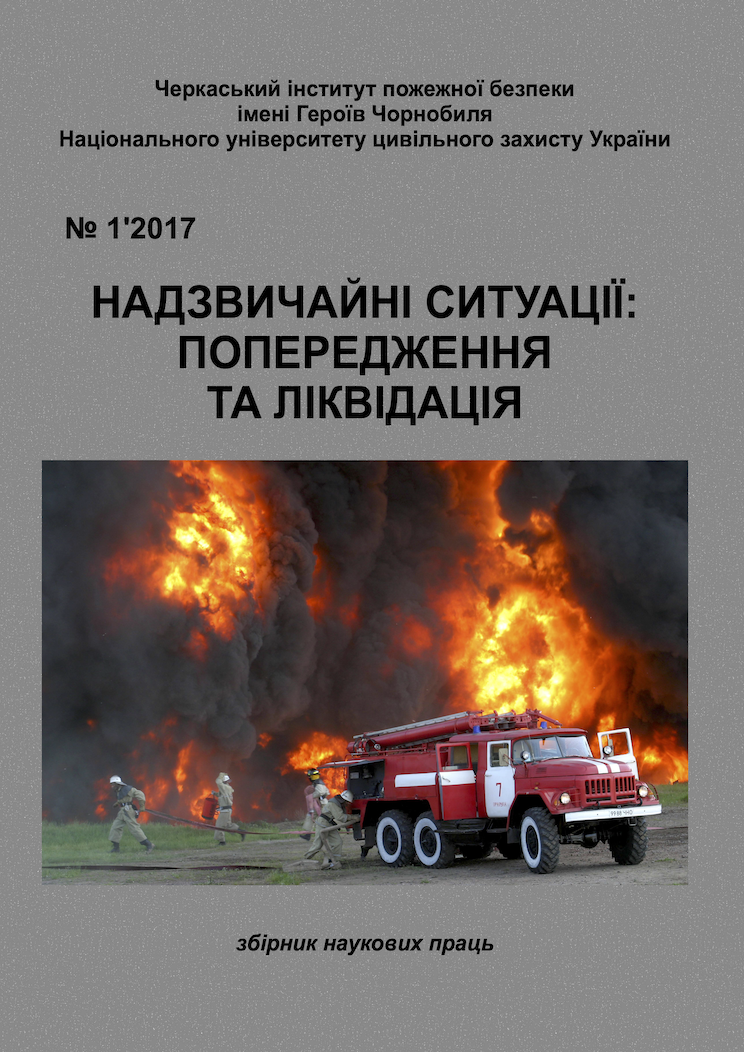STUDY OF DISPERSION IN THE HEATER TEMPERATURE SURFACE OF THE BASE WALL ON THE VALUE OF THEIR FIRE RESISTANCE
Abstract
To determine the limits of fire resistance the most common is the test method in special fire test kilns. However, fire tests and the parameters of modern test plants are far from perfect, as there are errors, as the fuel system management and fire furnace configuration do not ensure full compliance of the conditions of the experiment with the requirements of the standards in this field. The purpose of this article was to determine the dependence of the values of the boundary of the fire resistance of the bearing walls on the temperature dispersion on their heating surfaces as a scientific basis for improving the efficiency of the evaluation of the results of fire tests. In this paper, the problem of strength was determined to determine the bearing capacity of a reinforced concrete wall in a fire. During work, computational experiments using CFD and the finite element method were used. The study was conducted in two main stages. In the previous work, the heat engineering problem was solved to determine the unevenness of the temperature distribution in the inner layers of the reinforced concrete wall during tests for fire resistance in special fire units. The calculation results are used as input data for solving the problem of strength. For this purpose, the end-element models of bearing walls were created. We were struck by the type of fittings, its diameter and the concrete brand from which the wall was made. As a result of the studies, the dependence of the design values of the fire resistance of the reinforced concrete wall on the value of the maximum temperature dispersion on the heating surface of the structure during the fire tests and the error of the definition of the fire resistance limit was obtained, as well as the recommendations for creating new and improving existing furnace chambers from the tests on the fire resistance of the vertical reinforced concrete Building constructions to achieve greater uniformity of the temperature field along the vertex surface Egg-reinforced concrete structures, as a consequence - reducing the error of fire tests.


